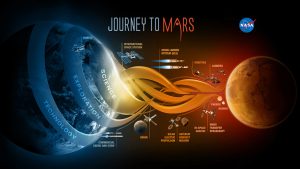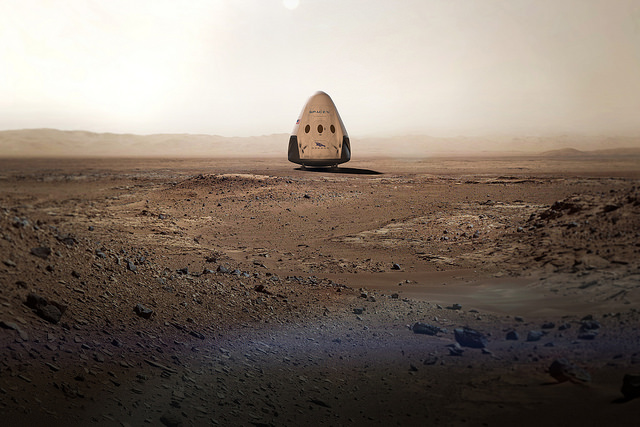SpaceX
How does SpaceX measure up to other Mars-destined challengers? [Countdown to Mars, Part 1]
SpaceX isn’t the only organization with eyes set on the skies of Mars. There are other dreamers with their own plans and technology. How does SpaceX measure up?
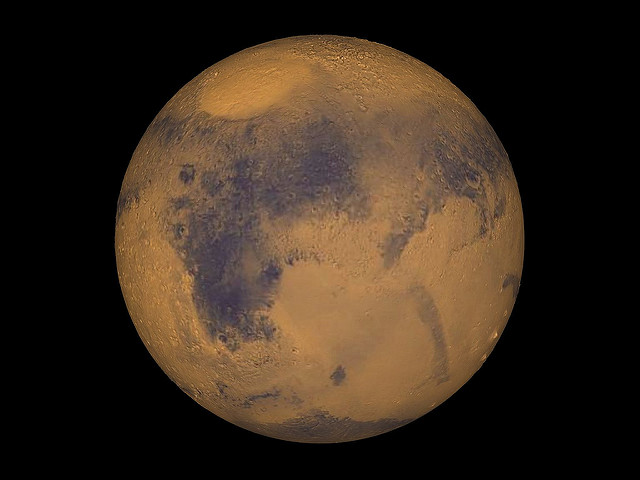
If it wasn’t entirely clear before, it is now with all the recent announcements from SpaceX: Elon Musk said “Mars”, and he really meant Mars. While Falcon 9 hits milestone after milestone, SpaceX inches closer and closer to “boots on the ground” in red, Martian regolith.
SpaceX isn’t the only organization with eyes set on Martian skies, however. There are other dreamers with their own plans and technology, NASA being a “given” of course. After all, if we’re going to Mars, it’s natural to expect the agency that sent humans to the moon to have something to say about sending humans to another planetary body.
Who all is planning on going to Mars?
To be clear, the Mars planners I’m referring to here are developing full missions for human transport, not just robotics. Further, I’m narrowing the criteria to only include those actively developing the technology rather than working on related scientific studies, developing artistic concepts, engineering helpful devices, and so forth.
In that light, it seems the field thus far consists of two other major players besides SpaceX.
NASA
Aptly named, NASA’s “Journey to Mars” program consists of developing all the capabilities needed to achieve what its designation implies. Their vision comprises the development of their next generation rocket, the Space Launch System, coupled with a crew capsule called Orion.
The Space Launch System has three primary components: One main core and two solid rocket boosters, most components being either derived or upgraded from space shuttle technology. The plan is to “evolve” the configurations through three “blocks”, the third of which will be capable of handling all of the payload needs for a mission to Mars.
The Orion capsule, nicknamed “Apollo on steroids”, is very similar to the capsules used in the Apollo programs, but with significant upgrades such as the heat shield that must handle higher reentry speeds. Further, it will house up to four astronauts (one more than Apollo) while supported by a service module, i.e., a connected structure that will provide resources such as power and oxygen. Overall, it’s about three feet wider than the Apollo capsules, an expansion which translates into a much roomier space square-footage wise.
Somewhere in NASA’s mix is an Asteroid Redirect Mission that involves capturing an asteroid, bringing it into orbit around the moon, and sending crews there to land and study it. Don’t see how that’s really related to Mars? Neither do I, but it’s included on all the “Journey to Mars” posters so it must be. I think I’ve heard people try and explain why the moon wouldn’t suffice for any Mars-related training as well, but I’m personally not convinced enough to really cite the argument. I’m not alone in that confusion, either.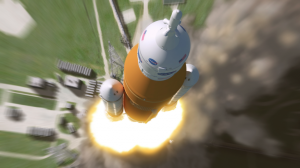
Personally, I’d prefer the pure scientific study of an asteroid to be the justification for the mission, or maybe even “practice” for a future Armageddon event, but when everyone is drumming for Mars, I guess you do what you can. I’ve read that NASA attempted to market it as both of those, but the attempts weren’t successful.
Oh, wait. They changed “asteroid” to “large boulder on an asteroid”. I wonder why? Some of their pages are still citing the original mission… Perhaps it was always either/or?
Speaking of that poster, there’s a space habitat and Mars transfer craft listed, but no other details are provided. NASA’s political and budgetary constraints seem to be limiting any details about how they plan on getting to Mars (landing in particular) once SLS and Orion are flying. These types of restrictions are the reason NASA even has other contenders for the mission, although those same challengers are the ones pushing the journey into the public drumming in the first place.
Mars One

Mars One is a non-profit foundation which hopes to send astronauts they select and train through an in-house application process to Mars via technology they will pay to have built and launched using current service providers.
Founded by Dutch scientist-entrepreneurs Bas Lansdorp and Arno Wielders in 2011, Mars One is an unusual player in the Mars transport game. It is not an aerospace company, as all systems are designed and built by outsourced companies, and their planned sources of funding are private investment and the creation of a reality show documenting the astronauts’ mission from training through their first steps on Mars (although they’ve had some recent troubles with that). Mars One would also like you to purchase plenty of merchandise in the meantime to support their efforts and have even set up a “point” system to encourage this.
For their astronauts, the company solicited applications from would-be space travelers around the world via the Internet, received about two hundred thousand responses, and is now in the process of narrowing down their candidate field to a maximum of twenty-four hopefuls (six groups of four, specifically) that will train together for the next ten years before groups are shuttled off to Mars every two years.
Mars One also plans on having their entire human habitat set up by rovers prior to the first astronaut arrivals, meaning there will be several cargo missions to the surface in the lead-up years. Their first unmanned mission is planned for 2020 wherein some tech will be put to the test along with placing a communications satellite in orbit. Then, a rover and second communications satellite is planned for 2022, followed by cargo missions in 2024 to have the habitat fully operational by 2025 in advance of the first crew arrival in 2027.
Oh, by the way, their trip to Mars will be one-way. According to them, it’s a strategic choice, not a matter of insurance liability for guaranteeing return.
While all space-going organizations face criticism in one way or another, the criticism lodged at Mars One is fairly significant, some even labeling the mission as a scam. To be fair, the nature of their mission combined with the lack of government backing or a billionaire founder puts them in the position that demands fundraising to be a primary activity. Add to that an estimated mission cost of six billion dollars and skepticism quickly rises. Everything involved becomes subject to close analysis.
Their plans aren’t impossible, of course, just full of challenges without perceivable solutions. I don’t personally believe the mission is a scam, and I don’t doubt its long-term viability should the astronauts actually make it to Mars; I think they won’t be the only crews visiting the planet come the days when their intentions match their funding needs, therefore a “back up” plan is essentially built-in. However, I also see a ten-year mission plan that is placing a lot of faith in contract work that is supposed to produce what SpaceX is still working on fourteen years after-the-fact and with a much better financial portfolio.
Honorable Mention: “Mars Direct” by The Mars Society
Founded in 1998 by Dr. Robert Zubrin (and “others”), The Mars Society has made humans on Mars their business for a very long time. Since they are not an organization primarily developing & building technology to go to Mars, I have to classify them as “honorable mention”; however, their contributions to the effort should definitely be noted. Elon Musk certainly has.

Dr. Zubrin of The Mars Society introduces Elon Musk. (Credit: Chris Radcliff under CC by SA-2.0.)
“Mars Direct” is The Mars Society’s detailed plan for putting humans on Mars and, like Mars One, it focuses on building components using existing technology to achieve orbit and landing rather than depending on future developments. It advocates a “live off the land” approach that minimizes cargo needs.
The Mars Direct mission would comprise two phases. First, using a heavy lift launch vehicle, a fuel generation structure would be sent to the Martian surface to generate a Methane/Oxygen bipropellant for a return trip and to power equipment. Second, another fuel generation structure plus a crew and habitat would be sent and landed near the first structure. While in orbit, the effects of zero gravity would be mitigated by rotation of the crew vehicle via a tether connected to the spent upper stage of the transport rocket to act as an anchor. The crew missions would necessarily require a two-year length due to the orbital proximities of Earth and Mars combined with the six-month travel time each way.
Unlike Mars One, this plan has been developed with incredible detail and was published in 1991 by Dr. Zubrin, David A. Baker, and Owen Gwynne. The Mars Society also has annual conferences (this year’s will be the 19th one) which both flesh out the plan’s details and feature speakers across the aerospace spectrum discussing the various aspects. Dr. Zubrin’s book, The Case for Mars, fleshes out the plan in a more readable format, and there’s also plenty of good stuff on the Mars One website.
SpaceX’s Plan for Mars
The founding goal of SpaceX was, and still is, making humans a multiplanet species. Therefore, no incredibly detailed introduction or lengthy explanation is really needed for them when discussing companies interested in going to Mars (see: publicity). However, for the sake of being thorough (and for the sake of sake’s sake), let’s review the Musk brand for Mars.
Known for its Falcon rocket series (along with its famous founder), SpaceX isn’t hitching a ride to Mars as is Mars One, thereby avoiding the potential pitfall of being “all dressed up with nowhere to go”. They’re building their own ride: The Falcon Heavy.
Scheduled for a test launch this November, the Falcon Heavy will be the most powerful rocket in operation since the Saturn V was used for the Apollo moon program. With three cores powered by nine Merlin engines each, Falcon Heavy will be able to haul around 120,000 pounds to low earth orbit (LEO), 50,000 pounds to geostationary transfer orbit (GTO), and 30,000 pounds of payload to Mars. Just for fun, SpaceX’s website also cites a 6,400 pound payload capacity for trips to Pluto.
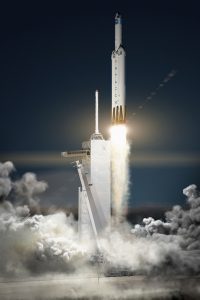 SpaceX is also developing their own crew capsule, the Dragon (“Red Dragon” when on its way to Mars), which will include a propulsive landing system (i.e., it can hover) via its eight SuperDraco engines. The landing system also doubles as an emergency escape system in the event that there’s a problem during launch, and while space traveling, Dragon will be supported by a “trunk” (essentially with the same function as Orion’s service module) to support missions as needed.
SpaceX is also developing their own crew capsule, the Dragon (“Red Dragon” when on its way to Mars), which will include a propulsive landing system (i.e., it can hover) via its eight SuperDraco engines. The landing system also doubles as an emergency escape system in the event that there’s a problem during launch, and while space traveling, Dragon will be supported by a “trunk” (essentially with the same function as Orion’s service module) to support missions as needed.
Now, pardon my excitement, but these things are really cool. The SuperDraco engines are doubled up and self-contained, meaning that the lander can lose up to half its engines and still land safely, and if anything goes wrong with one engine, it’s isolated to not impact the others. The engines are also 3D-printed out of Inconel, a high performance nickel-based super alloy.
Bonus level! SpaceX’s long-terms plans don’t just include short(ish) jaunts to Mars and back, although, unlike Mars One, there will be an option to return to Earth via regular cargo missions. There also may be an option with their up and coming Mars Colonial Transport vehicle.
The Mars Colonial Transporter is, at the moment, a mysterious development SpaceX is working on to achieve its goal of large-scale Martian colonization. There’s plenty of speculation about the details, but officially, even the size is being kept secret for now. Elon will only reveal it to be “So big.” A few details were shared (or speculations confirmed) during a Reddit “Ask Me Anything “ (AMA) session this past January such as:
- The second stage could be reusable
- The architecture will be completely different from the Falcon/Dragon system
- The goal payload capacity is 100 metric tons
- There is a family of methane-based engines called “Raptor” being developed by SpaceX for travel to and exploration of Mars.*
*Note: This detail wasn’t particularly new to the AMA, but there aren’t many original sources where Elon or a SpaceX executive has spoken directly about it, thus I’ve included it.
Overall, it certainly seems like SpaceX is charging ahead compared to the others that are aimed for Mars, but it’s not because of their publicity wins. Their steady march via the piece by piece development of the required technology combined with the customer-driven financial viability of the company as a rocket launch provider are key to the believably that they will actually make Mars “happen”.
Coming Up on Countdown to Mars…
 SpaceX’s colonial “grand plan” reveal is what I’m counting down to with this “Countdown to Mars” article series. Scheduled for September 26th – 30th of this year, Elon Musk has stated that he will be announcing detailed plans for their Mars Colonial Transporter at the International Astronautical Conference in Guadalajara, Mexico. It’s supposed to be so awesome, even Elon can hardly contain himself. To say that I’m incredibly excited as well would be a huge understatement. So I won’t. I’ll just keep writing about things related to it!
SpaceX’s colonial “grand plan” reveal is what I’m counting down to with this “Countdown to Mars” article series. Scheduled for September 26th – 30th of this year, Elon Musk has stated that he will be announcing detailed plans for their Mars Colonial Transporter at the International Astronautical Conference in Guadalajara, Mexico. It’s supposed to be so awesome, even Elon can hardly contain himself. To say that I’m incredibly excited as well would be a huge understatement. So I won’t. I’ll just keep writing about things related to it!
Coming up on “Countdown to Mars”…
How do these companies plan on solving some of the biggest challenges for achieving a successful mission to Mars? Then, if we are talking about permanent settlements on Mars, what will the human power structure look like? Or in other words, what kind of government will the first human Martians have?
Stay tuned!

News
SpaceX announces Starship Flight 8’s new target date
Starship’s eighth flight test is scheduled for Thursday, March 6, with the launch window opening at 5:30 p.m. CT.
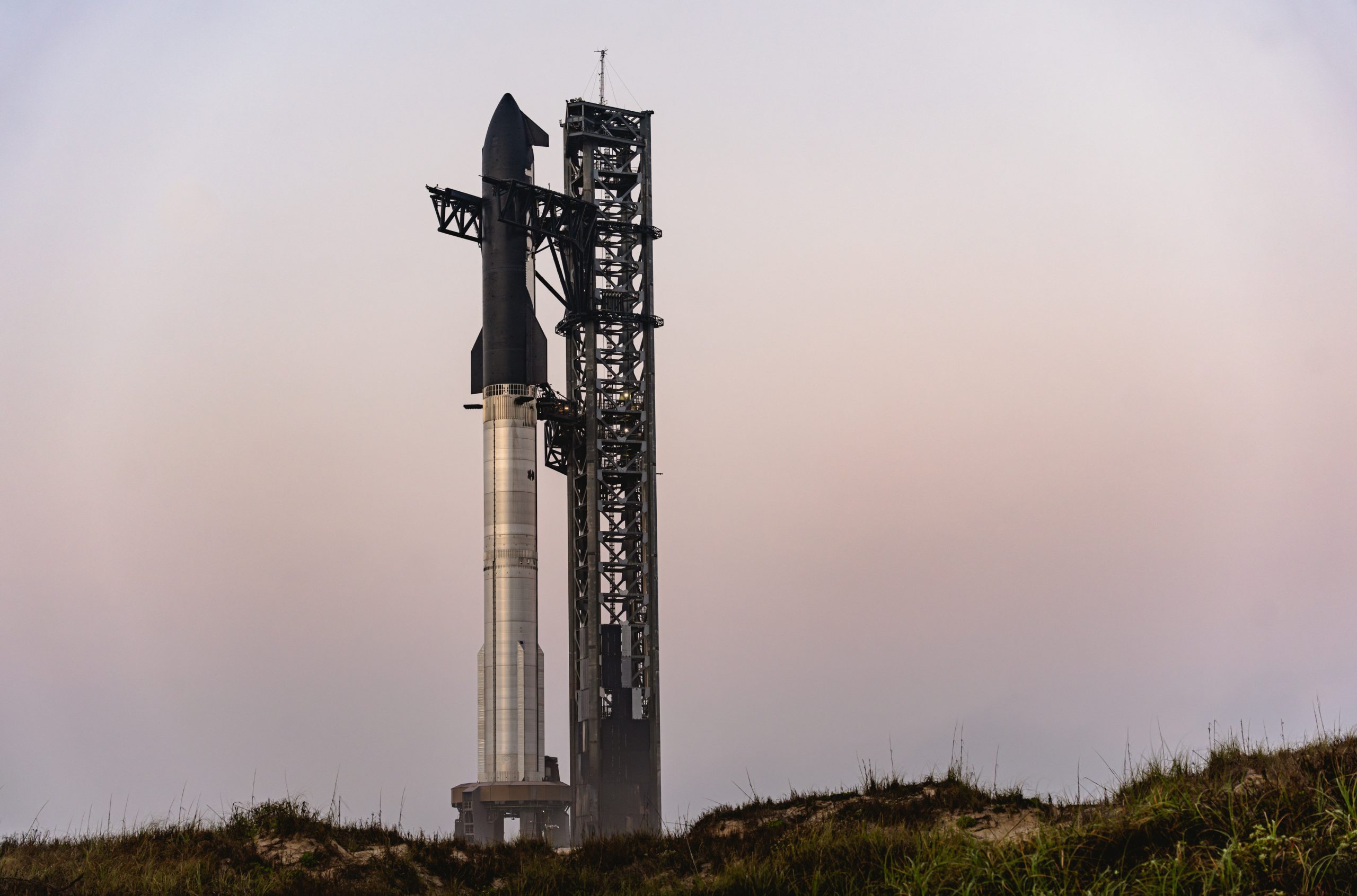
SpaceX has announced a new target date for Starship Flight 8. As per the private space company, Starship’s eighth flight test is scheduled for Thursday, March 6, with the launch window opening at 5:30 p.m. CT.
Starship Flight 8 comes after SpaceX completed an investigation into the Starship upper stage’s loss during Flight 7.
Mission Targets
The upcoming mission will follow a suborbital trajectory, deploying four Starlink simulators that will burn up on reentry, as per a release from SpaceX. This also marks Starship’s first payload drop. A single Raptor engine relight in space is planned, alongside reentry experiments that should help pave the way for the Starship upper stage’s return and catch at the launch site in later missions.
The Super Heavy booster will launch, execute a boostback burn, and attempt a catch by the tower’s chopsticks. If health checks on the booster or tower falter, or if the Flight Director withholds final approval, the booster will default to a trajectory for a soft splashdown in the Gulf of America. Sonic booms from the returning booster will be audible near the landing zone.
Starship's eighth flight test now targeting to launch as soon as Thursday, March 6 → https://t.co/alyJTRtOIP pic.twitter.com/3OORFZbSPT— SpaceX (@SpaceX) March 5, 2025
Improvements to Starship and Super Heavy
As noted by SpaceX, Starship’s forward flaps have been redesigned to reduce reentry heat exposure and simplify mechanisms. The Starship upper stage’s propulsion system has also gained a 25% propellant volume boost for longer flights.
SpaceX has removed a number of tiles from Starship to stress-test vulnerable spots across the vehicle. The reentry profile is designed to intentionally stress the structural limits of the upper stage’s rear flaps while at the point of maximum entry dynamic pressure as well.
The Super Heavy booster, on the other hand, features upgraded avionics, a more powerful flight computer, enhanced power and network distribution, and integrated smart batteries.

News
SpaceX explains reasoning for Starship 7 upper stage loss
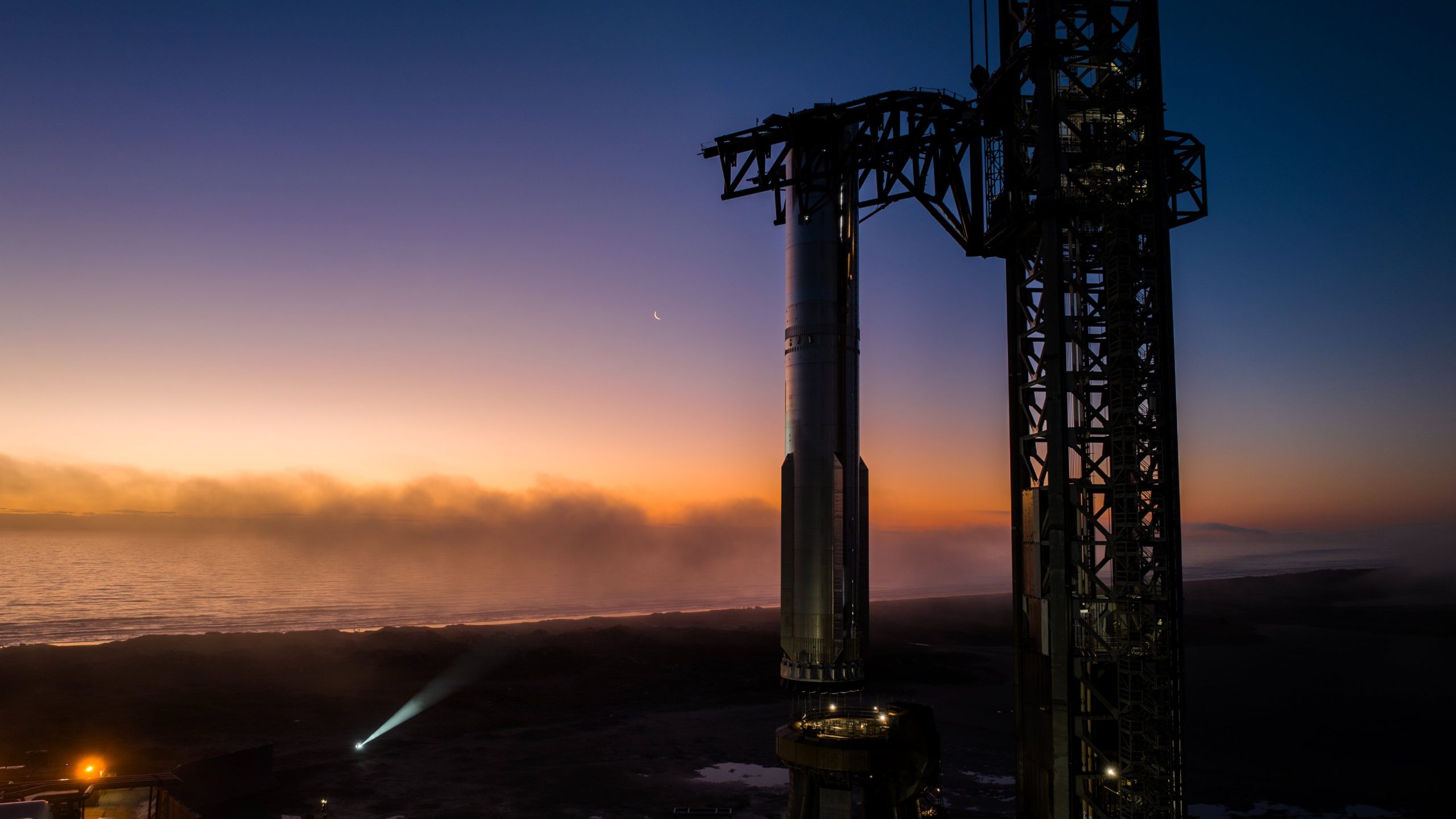
SpaceX is set to launch its eighth test flight of the Starship rocket this Friday. Ahead of the most recent test in what could be the most revolutionary spaceflight program since NASA’s Apollo, SpaceX is clearing the air about what went wrong during its previous test flight, which resulted in the loss of the second stage during its ascension.
On January 16, SpaceX successfully launched Starship while also completing its second successful catch of the lower-stage booster.
However, the flight did not go as smoothly as initially anticipated, as the company lost Starship’s upper stage roughly eight minutes and twenty seconds into flight.
Now, the company is clarifying what happened that led to the demise of the upper stage, which SpaceX has identified with the recognition of “flashes” that occurred after vehicle separation.
SpaceX completes second catch of lower stage, but loses Starship
SpaceX says that a flash was observed roughly two minutes into its burn after vehicle separation. The flash, along with sensors that was a pressure rise in the attic, indicated a leak:
“Approximately two minutes into its burn, a flash was observed in the aft section of the vehicle near one of the Raptor vacuum engines. This aft section, commonly referred to as the attic, is an unpressurized area between the bottom of the liquid oxygen tank and the aft heatshield. Sensors in the attic detected a pressure rise indicative of a leak after the flash was seen.”
This was not the only flash that was observed. Two minutes after the first, another flash was seen, but this one was followed by sustained fires in the attic. These fires caused Starship’s engines to perform a controlled shutdown:
“These eventually caused all but one of Starship’s engines to execute controlled shut down sequences and ultimately led to a loss of communication with the ship. Telemetry from the vehicle was last received just over eight minutes and 20 seconds into flight.”
SpaceX clarified that Starship was destroyed and communication with the ship was lost before it was able to initiate any destruct rules for its Autonomous Flight Safety System. The company said this was “fully healthy when communication was lost.”
It went on to say that the “most probable root cause” of the loss was likely due to an environment not seen during testing:
“The most probable root cause for the loss of ship was identified as a harmonic response several times stronger in flight than had been seen during testing, which led to increased stress on hardware in the propulsion system. The subsequent propellant leaks exceeded the venting capability of the ship’s attic area and resulted in sustained fires.”
Nevertheless, Starship will launch for the eighth time soon, with CEO Elon Musk noting that the most likely date will be Friday. This could be the second of potentially 25 Starship launches planned for 2025.
Need accessories for your Tesla? Check out the Teslarati Marketplace:
- https://shop.teslarati.com/collections/tesla-cybertruck-accessories
- https://shop.teslarati.com/collections/tesla-model-y-accessories
- https://shop.teslarati.com/collections/tesla-model-3-accessories
Please email me with questions and comments at joey@teslarati.com. I’d love to chat! You can also reach me on Twitter @KlenderJoey, or if you have news tips, you can email us at tips@teslarati.com.
News
SpaceX Starship’s next test flight gets target date – Here’s when it could lift off
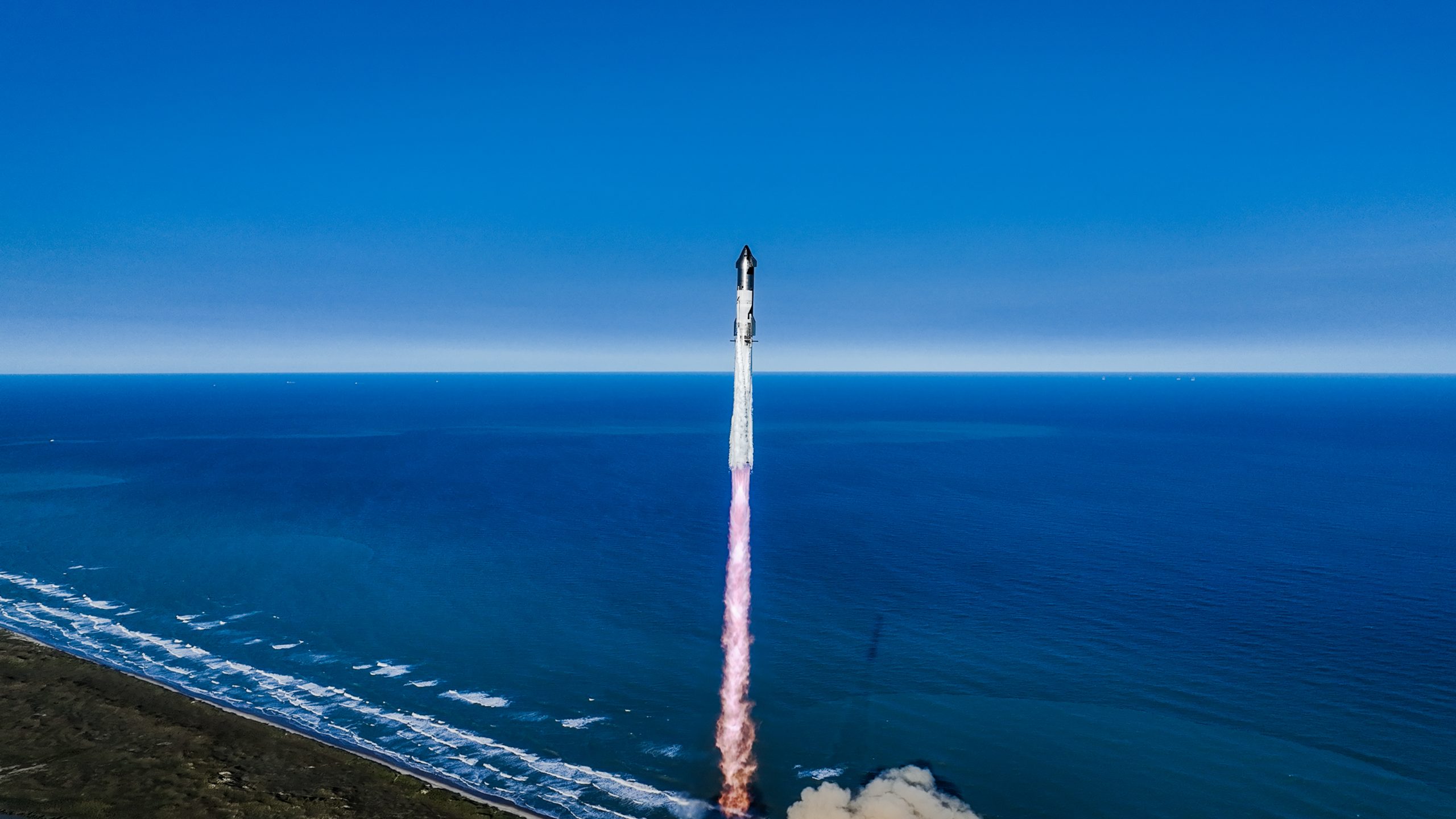
SpaceX’s Starship will soon be lifting off for its eighth test flight, according to federal airspace advisory listings, as the Elon Musk-headed company will look to rebound from its most recent launch that ended in the destruction of its rocket.
SpaceX has listed its launch window as starting on Wednesday, February 26, at 5:30 p.m. EST. The company will look to launch between then and on any of the various backup opportunities that will be available through Thursday, March 6.
Coming off of what is one of its most eventful missions yet with the seventh Starship launch, the company is going to look to improve in one facet while aiming to repeat another. First, SpaceX said it is aiming to complete yet another catch of the first-stage booster, something it has now accomplished on two other occasions.
However, the last launch also resulted in the complete loss of the rocket itself, which was destroyed during its ascension phase. Debris from the exploded rocket fell over the Caribbean island of Turks and Caicos, lighting up the sky in what was a stunning display of a learning experience for the aerospace company:
?Absolutely insane video of Starship coming down over Turks & Caicospic.twitter.com/28wfgdKJuN
— TESLARATI (@Teslarati) January 16, 2025
The only thing that would potentially delay Starship’s next launch is the lack of closure to the previous investigation, which dealt with finding the reasoning for the rocket’s explosion.
SpaceX aimed to explain what happened shortly after the destruction of Starship after the seventh test flight:
“Following stage separation, the Starship upper stage successfully lit all six Raptor engines and performed its ascent burn to space. Prior to the burn’s completion, telemetry was lost with the vehicle after approximately eight and a half minutes of flight. Initial data indicates a fire developed in the aft section of the ship, leading to a rapid unscheduled disassembly with debris falling into the Atlantic Ocean within the predefined hazard areas.”
Musk also said that a leak of oxygen or fuel in the cavity above the ship engine firewall could have been responsible for the loss.
He also expected Starship to return to launch in February.
Need accessories for your Tesla? Check out the Teslarati Marketplace:
- https://shop.teslarati.com/collections/tesla-cybertruck-accessories
- https://shop.teslarati.com/collections/tesla-model-y-accessories
- https://shop.teslarati.com/collections/tesla-model-3-accessories
Please email me with questions and comments at joey@teslarati.com. I’d love to chat! You can also reach me on Twitter @KlenderJoey, or if you have news tips, you can email us at tips@teslarati.com.
-
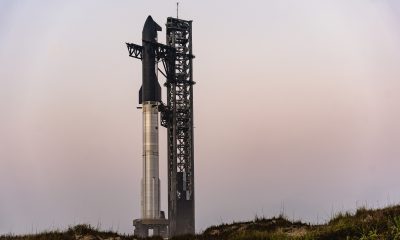
 News1 day ago
News1 day agoSpaceX announces Starship Flight 8’s new target date
-

 News2 days ago
News2 days agoTesla launches fresh U.S. promotions for the Model 3
-

 Elon Musk3 days ago
Elon Musk3 days agoTesla mulls adding a new feature to fight off vandals as anti-Musk protests increase
-

 News4 days ago
News4 days agoTesla’s lead designer weighs in on plans for these two Model Y colors
-

 News3 days ago
News3 days agoTesla starts Model Y ‘Launch Edition’ deliveries in the U.S.
-

 Elon Musk3 days ago
Elon Musk3 days agoTesla gaining with Republicans as it loses traction with Democrats: Stifel
-

 Energy20 hours ago
Energy20 hours agoTesla lands in Texas for latest Megapack production facility
-

 News2 days ago
News2 days agoTesla China wholesale figures drop in February amid new Model Y transition
